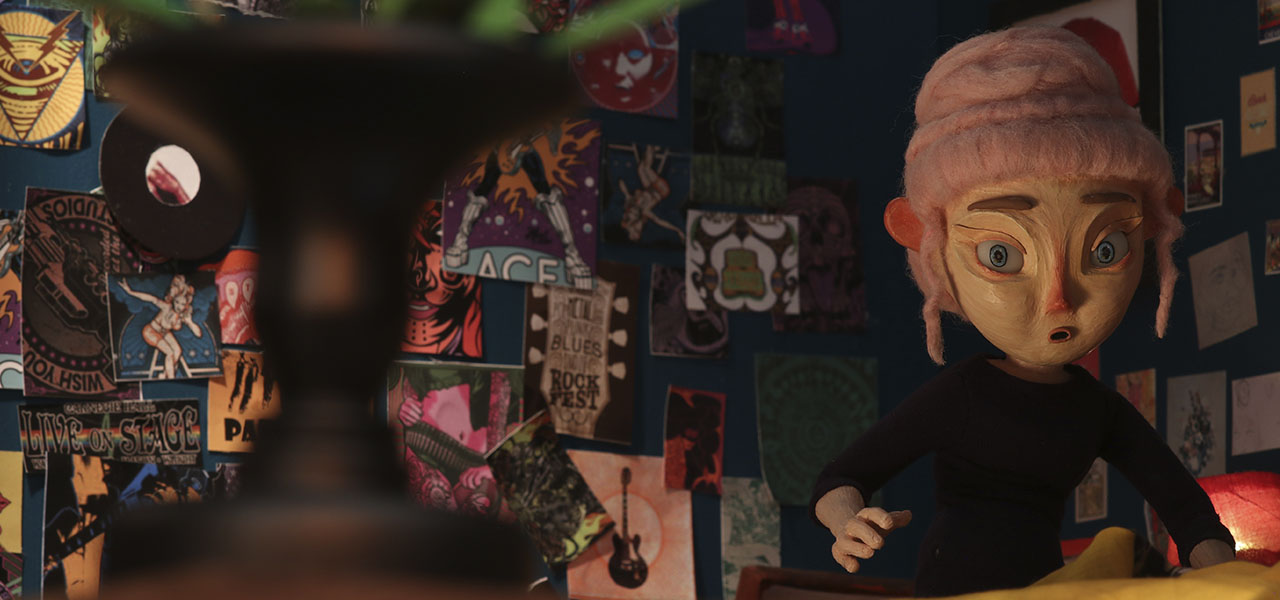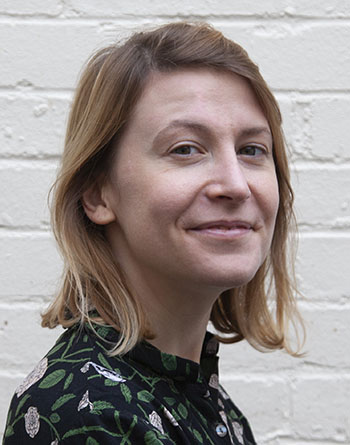

2025 Oscars Short Film Contenders: ‘Curiosa’ Director Tessa Moult-Milewska
Cartoon Brew is putting the spotlight on animated short films that have qualified for the 2025 Oscars.
In this installment, we’re looking at Curiosa from British filmmaker Tessa Moult-Milewska. The short earned its Oscars qualification by winning best animated short at the Austin Film Festival.
Curiosa tells the story of overly curious Mary, who visits her boyfriend’s flat for the first time, just to discover it’s been stripped bare of all personal belongings. After being denied an explanation, she climbs into his head, diving into his psyche and discovering more about him, their relationship, and even herself. The film was made at the National Film and Television School in the U.K.
Cartoon Brew: Finding the right balance between knowing too little and too much about the person you want to build something with is the main theme of your film, but how does that reflect on your own appreciation of relationships in a modern world today?

Tessa Moult-Milewska: It feels peculiar to me that people so openly share photos, videos, and memories from years ago with strangers online — as well as with people they might be building relationships with in the future. When you’re getting to know someone, every piece of information carries weight, and without narrating the stories behind these photos, they can easily turn into abstractions disconnected from our lives. I don’t feel like I’m the same person I was five years ago, so why would I present moments from that time, especially images of relationships with people I’m no longer in touch with?
In a world with so many opportunities for connection, I find it’s easy to prioritize quantity over quality in relationships and fail to dig deeply enough into each other’s minds to build true understanding, which is particularly important with people who are different from us. We’ve never been more comfortable in our own bubbles, and it’s so easy to shy away from ideas that make us uncomfortable. On the other hand, as much as I genuinely want to understand others — which I believe is essential for intellectual and emotional growth — I also know this will never be fully possible. There’s a certain loneliness in realizing how little we can control or predict, yet there is so much to discover in that mystery.
What was it about this story or concept that connected with you and compelled you to direct the film?
I once experienced a curiosity similar to Mary’s when I was young and a bit insecure in my first relationship. My vivid imagination sparked jealousy when I heard details about my partner’s past. Retroactive jealousy is a fascinating topic, as is the dilemma of whether it’s better to know everything or remain happier, perhaps in ignorance. I think this “coming-of-age” moment in a relationship — when we start to realize that our partner has loved before and that what we’re creating might not be the pinnacle of their romantic life — stems from the idealized narratives about love that girls are exposed to from a young age.
These narratives often promote the idea of a romantic connection that is perfectly reserved for one single, aligned other half. I’ve always found this narrative, as well as many social narratives about a woman’s position in society, to be questionable. I’m also drawn to magical realism, surrealism, and the psychology of the human mind, and I wanted to combine these interests in a short film.
What did you learn through the experience of making this film, either production-wise, filmmaking-wise, creatively, or about the subject matter?
At the early stages of working on the story, I didn’t fully realize how many people would relate to the feelings portrayed in it. During the pixilation shoot, we also worked with actors. As animators, we usually don’t animate live people, so this presented some challenges, but overall it felt like an incredibly rewarding experience. Talking through scenes, improvising dialogue, and brainstorming ideas made the process particularly enriching. I also learned a lot about receiving feedback, realizing that it’s just as important to take and incorporate feedback as it is to be assertive and hold onto the ideas you believe in.
Can you describe how you developed your visual approach to the film? Why did you settle on this style/technique?
As a creator, while I have a love for stop motion and often explore similar themes in my stories, I don’t confine myself to one visual approach and wanted to try something new in Curiosa. The tutors at the National Film and Television School really encourage experimentation and the development of unique visual styles using mixed media techniques. The idea of animating masks with real people felt new and fresh to me — I hadn’t seen this technique in other films and knew I wanted a distinctive aesthetic contrast between the realistic exterior world and the world inside the mind. This led me to combine both stop-motion animation and pixilation styles.

.png)